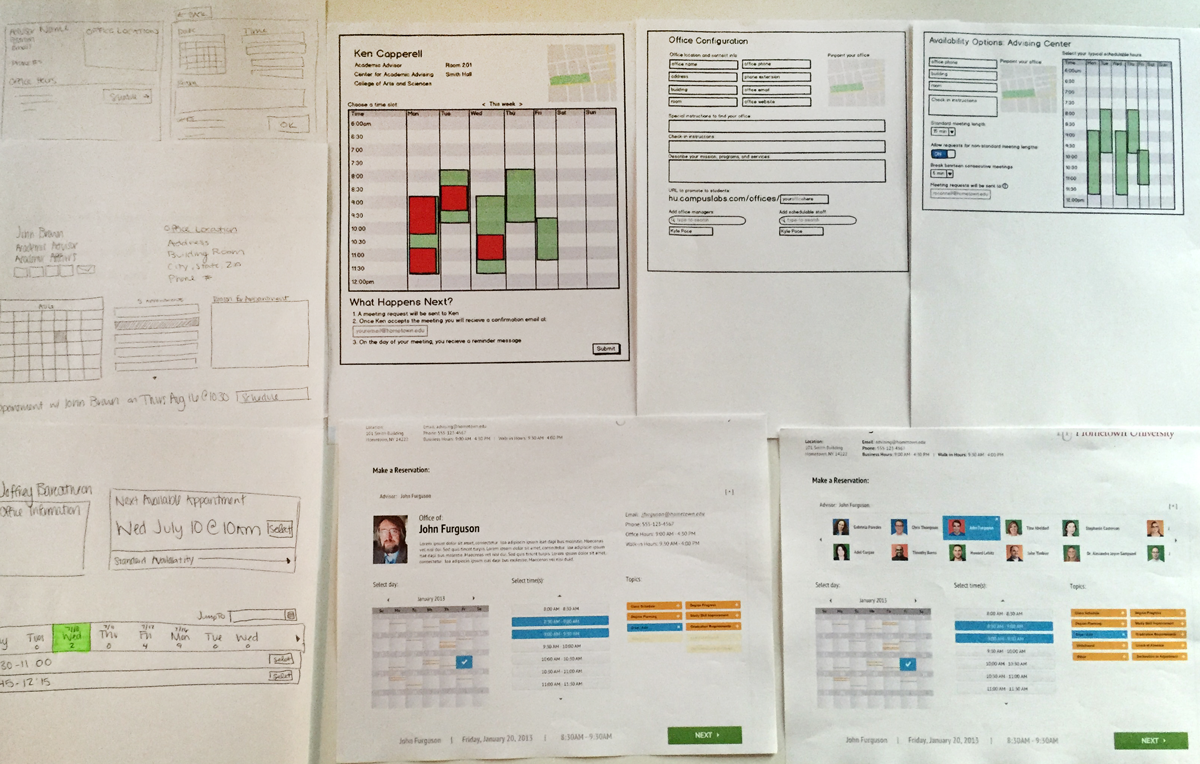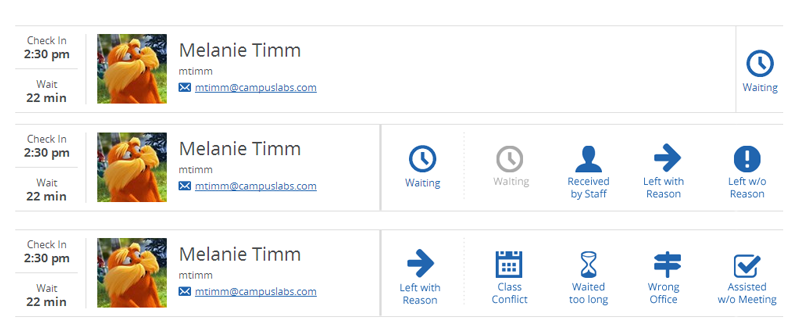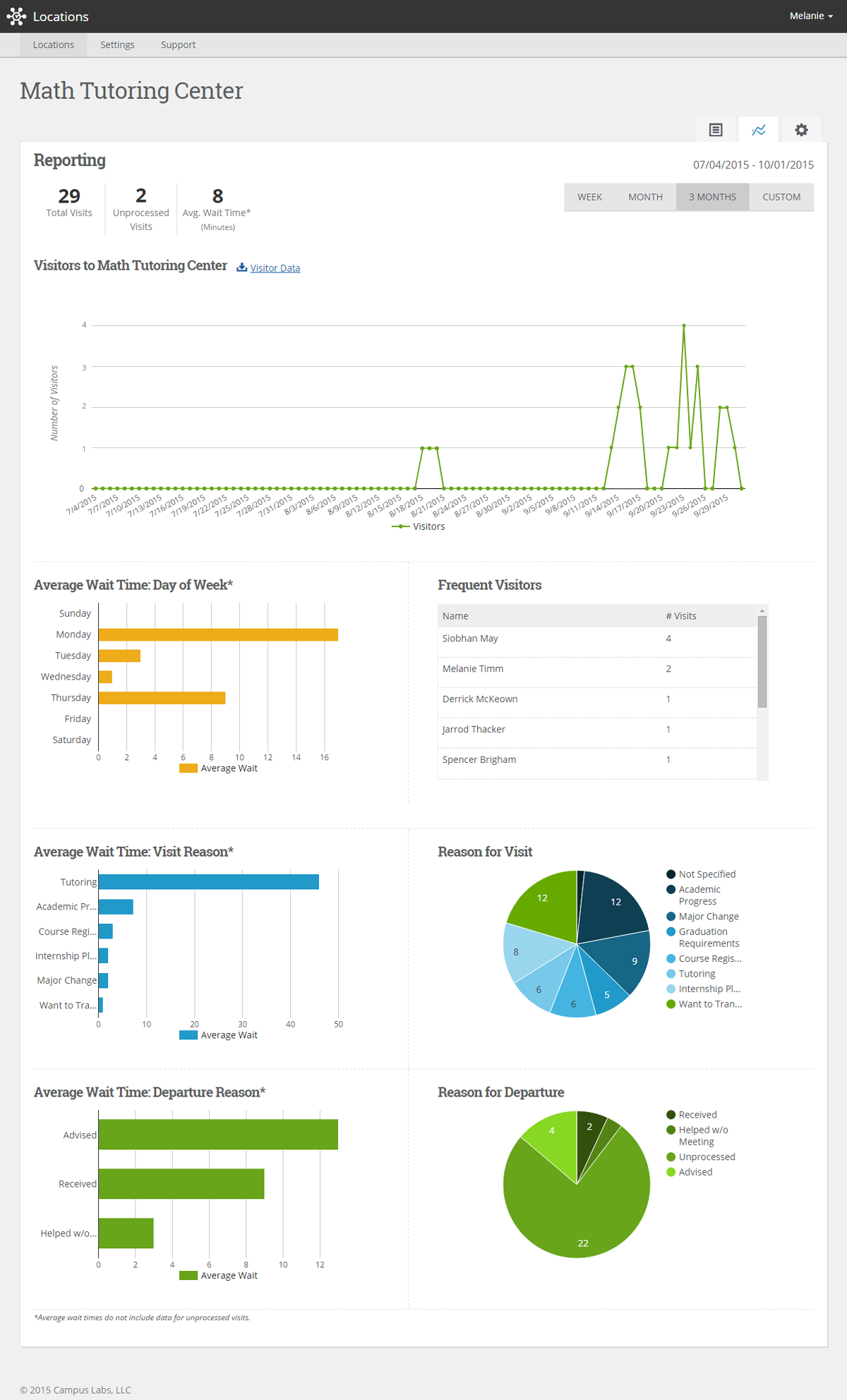Locations
Overview
Learning where, why and how students are utilizing campus resources.
Locations helps institutions track interactions with offices around campus and manage resource allocation and staffing. When used in conjunction with Beacon, Locations will track when students follow through on suggested actions from their advisors.
Early Mockups & Ideas
When we first started brainstorming what features a product like Locations could have, there were a lot of ideas! Most of our team had bad memories of trying to get appointments in our own college days, and we saw a market ripe of innovation.
What if you could pose your advising question to the system and we could suggest which office or person you should go to to solve your problem? We mocked up concepts for scheduling appointments with the office in general or with a particular advisor. We thought about incorporating geolocation or suggesting particular advisors based on classes or other data points we knew about students.
However, when we talked to campus professionals what they really wanted was a simple way to track who came into an office and what brought them there. They wanted to know how the office was operating and whether students needs we being met. Most offices primarily dealt with walk-ins so a scheduling tool was nice, but a better idea for version 2.0. They were excited about the prospect of using geolocation, but the initial build-out of mapping location areas would be very time consuming and slow initial roll-out and adoption.

Our initial MVP (Minimal Viable Product) of Locations was a much more steamlined product than we originally conceived. There was a portal for student's to check-in to a location, a location visitor management and tracking tool for that location's staff, charts and visualizations for managing a location over time and identifying opportunities for improvement, and a data stream back to Beacon to track advisor referral success.
Tracking Students Across Campus
An institution can set up a "location" anywhere they want to track students. Upon entering said location, students are prompted to sign in and explain why they are visiting that station.
Each location can program up to 10 reasons a student might be visiting. The bank of reasons is controlled by a system administrator so all offices are selecting from the same pool and data on different reasons can be collected and tracked across all offices. If a student doesn't have an account in the system, they can create a profile from this station as well.


Managing the Waiting Room
Once a student checks in to a location, they are put in a virtual waiting room accessible by all that location's staff. Wait time and visit reason are displayed to help manage time and resources most effectively.
When a student is admitted, that staff member can mark how they interacted with the student. If a student leaves the office before an interaction occurs, those reasons can be reported as well.


Monitoring & Reporting
Location administrators have tools to track visitors over time and identify trends and popular services. This information can help with resource allocations and funding requests, or identify offices where improvements in functioning or messaging might be needed.

Connections Back to Beacon
If the institution is also using Beacon, an office visit is noted on that student's Beacon profile to close the loop on advisor referrals.